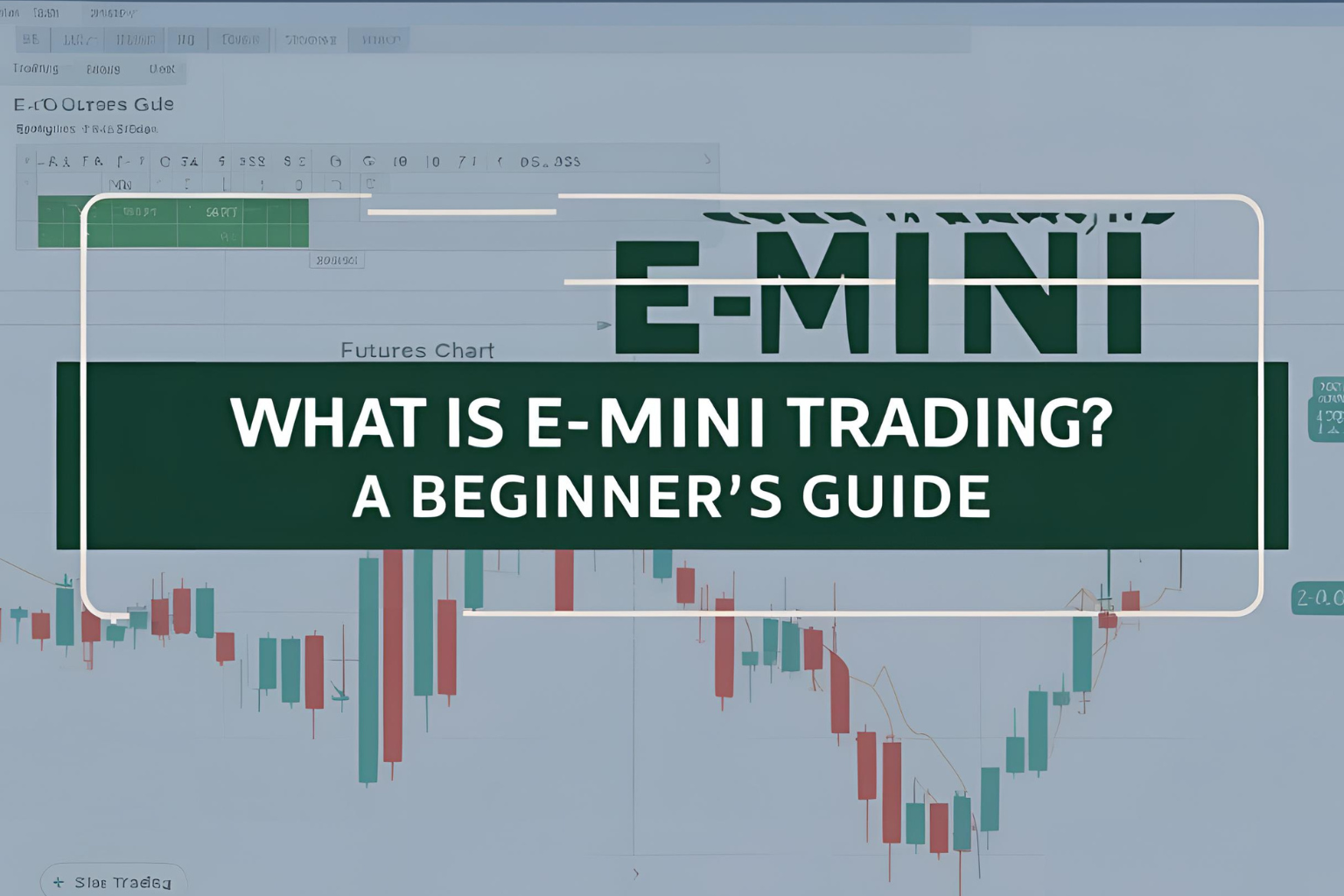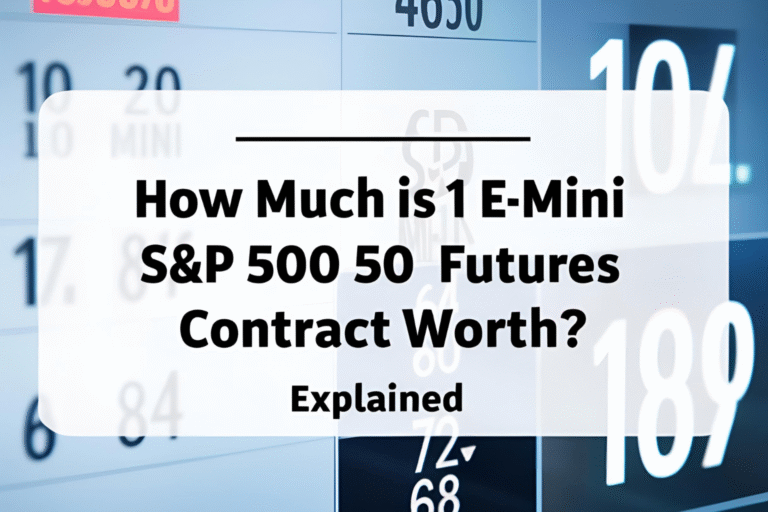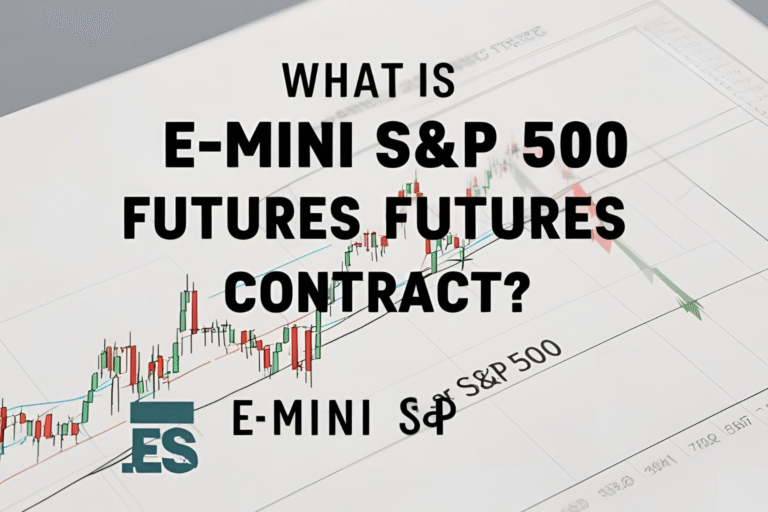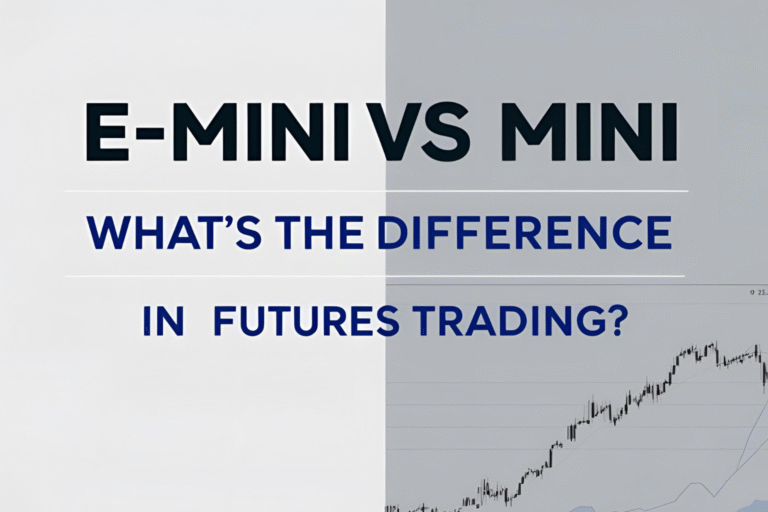What Is E-mini Trading? A Beginner’s Guide
If you’re new to futures trading, the term “E-mini” might sound technical. But don’t worry—it’s simpler than it seems. This guide explains what E-mini trading is, how it works, and how you, as an Indian trader, can explore it step-by-step.
What Is an E-mini?
E-mini stands for “Electronic Mini Futures Contract.” It is a smaller version of a standard futures contract, introduced by the Chicago Mercantile Exchange (CME) to make futures trading more accessible to retail traders.
The most popular E-mini contract is the E-mini S&P 500 Futures (ticker: ES), which tracks the S&P 500 stock index.
Key Features of E-mini Contracts
- Traded Electronically: All trades are executed via CME’s Globex platform.
- Lower Margin Requirement: Requires less capital than full-sized contracts.
- High Liquidity: Especially in the E-mini S&P 500—tight spreads and deep order books.
- 24-Hour Trading: Nearly around-the-clock access, 5 days a week.
Popular Types of E-mini Contracts
| Contract | Symbol | Underlying Asset |
|---|---|---|
| E-mini S&P 500 | ES | S&P 500 Index |
| E-mini Nasdaq 100 | NQ | Nasdaq 100 Index |
| E-mini Dow | YM | Dow Jones Index |
| E-mini Russell 2000 | RTY | Russell 2000 Index |
For most beginners, the E-mini S&P 500 (ES) is the starting point.
Why E-mini Trading Is Popular
- Smaller Lot Size: You don’t need to buy large quantities like institutional traders.
- Volatility and Opportunity: Offers good movement for day and swing trading.
- Transparency: All pricing and volume are public via CME.
- Scalable: You can increase contract size as your skills grow.
How Does E-mini Trading Work?
When you trade an E-mini futures contract, you’re agreeing to buy or sell the underlying index at a future date. However, most traders don’t hold until expiry—they close positions earlier for profit.
Example:
If the S&P 500 Index is at 4500, and you buy 1 E-mini ES contract, each 1-point move equals $50.
If the index moves to 4510, you make 10 x $50 = $500.
Can You Trade E-mini Futures from India?
Yes, Indian residents can trade E-mini contracts through authorized international brokers. However:
- You’ll need to comply with Liberalized Remittance Scheme (LRS) rules.
- You must open a trading account with a broker that gives access to CME Globex.
- Ensure all funds are legally remitted in USD for global investing.
Tools Needed for E-mini Trading
- Brokerage Account: International broker with CME access (e.g., Interactive Brokers)
- Trading Platform: ThinkorSwim, NinjaTrader, or TradingView for charting
- Risk Management Tools: Stop-loss, position sizing calculator
- Market Data Feed: Live chart data from CME (some brokers provide free access)
Risks Involved in E-mini Trading
- Leverage Risk: High leverage can amplify losses
- Volatility: Sudden market moves can trigger stop-outs
- Overtrading: Frequent trades without a plan lead to emotional decisions
- Currency Fluctuations: INR-USD conversion rates affect capital and returns
Always trade with a proper plan and capital preservation mindset.
Summary: Is E-mini Trading Right for You?
E-mini trading is an ideal entry point for Indian traders looking to step into global futures markets. With lower capital requirements, high liquidity, and strong market structure, it’s beginner-friendly—but only if you learn the fundamentals and manage your risks wisely.
FAQs
Q1. What is the minimum capital needed to trade E-mini futures?
Typically, you can start with $3,000 to $5,000, but check with your broker for margin requirements.
Q2. Is E-mini trading legal in India?
Yes, under the LRS scheme by RBI. You must route funds properly and declare investments.
Q3. Can I trade E-mini on Indian exchanges like NSE or BSE?
No. E-mini contracts are listed on CME, which is a US exchange.
Q4. How do I monitor E-mini market hours from India?
E-mini S&P 500 trades almost 23 hours/day. Indian traders can use IST-converted CME trading hours.
Q5. Where can I find a live chart for E-mini S&P 500?
You can view it on platforms like TradingView, CME Group, or your broker’s platform.





